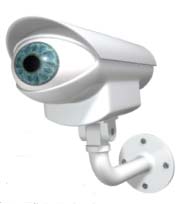In the Public Eye
Government finds a better way to protect residents of the public housing system.
- By Ralph C. Jensen
- Jun 30, 2008
 Building automation has revitalized public safety
in Puerto Rico by employing a video surveillance
system that improves communication
throughout the police force and centralizes public housing
issues.
Building automation has revitalized public safety
in Puerto Rico by employing a video surveillance
system that improves communication
throughout the police force and centralizes public housing
issues.
The challenge before government officials was to
better protect residents of Vivienda Public Housing in
Puerto Rico. People needed protection from crimes such
as battery, murder and complex drug trafficking.
A Call for Help
Puerto Rico is home to nearly 4 million people, and is
also a tourist destination. But on this island, nearly 10
percent of the population lives in public housing. Crime
is nothing new to these residents, but it is not something
that should plague them either.
Security guards were a common presence throughout
the Vivenda Public Housing system, but they were handcuffed
when it came to effectively monitoring suspicious
activity, and communication between the guards, residents
and police was meager at best. A solution was
needed immediately, not only for the residents’ safety,
but also to help deter crime with a reliable security system
that would effectively monitor activities and
improve communication.
Solving the problem would be complex but not
impossible. Government officials offered a pilot project
two years ago. Several bidders went after the project, but
local security company Avant Technologies won the contract.
Avant is homegrown and knew about the problems
in public housing.
In that two-year period, crime has decreased in the
hand-picked public housing pilot areas. Avant’s bid and
installation began the reversal of crime statistics by
partnering with ObjectVideo; the companies designed
and implemented a sophisticated video surveillance
system that included ObjectVideo’s OnBoard solution.
The system featured video analytics that enabled rulesbased
people detection, classification, tracking and
real-time alerting.
“By using ObjectVideo OnBoard video analytics,
Avant has created an intelligent video surveillance
solution that acts as a force multiplier for the Puerto
Rican Public Housing Authority,” said Jamie Baker,
director of OEM accounts for ObjectVideo. “The first
responders and investigators who use the surveillance
system use the video analytics to prevent situations
from developing and to more efficiently build up evidence
from forensic data.”
Layers of Protection
The project was not only successful—when residents at
other housing complexes saw the results, they started
asking for cameras.
“The pilot project turned into a second bid with 15
to 20 housing units and 460 cameras, all monitored in
San Juan,” said Alberto Diaz, national sales manager at
Avant Technologies.
Monitoring is the duty of the state police in Puerto
Rico, an island that is 100 miles by 35 miles. This application
is the largest central station in the United States and
its territories for a public housing project. Law enforcement
saw complimentary numbers in crime decreasing 20
percent or more. This was an important factor for state
officials who began monitoring up to 375 complexes, and
in neighborhoods where 80 percent of the murders were
related to drug trafficking in public housing.
The security system works as a video sentinel server, as
the video management platform engine, driving live and
recorded video, controlls encoders and provides user
access control. A map-based graphic viewer provides
access cameras with MPEG-4 images and, because the
cameras featured video analytics, the system was completely
automated to assist law enforcement. As many as
35 police officers monitor the images during a work shift.
“The camera systems also have protected each other,”
Diaz said. “The cameras overlap so if a camera or maybe
even a group of cameras fail or are compromised, one
camera protects the others. A tripwire is part of the video
analytics package.”
The analytics has proved itself over time, according
to Diaz. It provides perimeter protection for residents in
public housing and,
for law enforcement, it
shows where people are
congregating, especially in high drug use
areas. It helps security know where there is activity and
where law enforcement resources are best deployed.
“One problem in fighting the drug cartels is that
they have their own security,” Diaz said. “Everyone
wants to know what the other is doing. Video analytics
gives law enforcement some idea of what’s going on in
the neighborhoods.”
Real Results
The benefits received from this installation allow the
police to detect, classify and track suspicious people in
real time. Diaz said the system has become a true deterrent
to crime. The centralized system also has improved
communications by eliminating redundancies and
increasing shared knowledge among police officers and
other public safety officials.
“In addition to helping us reduce crime, the intelligent
video surveillance system has enabled us to
improve communication throughout our police force and
centralize public housing issues,” said Carlos Laboy,
executive director of the Puerto Rico Public Housing
Administration.
Recorded video also can be used as evidence in criminal
investigations, which can reduce associated costs to the
government. Because law enforcement wanted a turnkey
solution, Avant was the only bidder able to fulfill that guidance
with Vicon cameras, IBM servers, ObjectVideo software
and on-site technicians who manufacture, design and
integrate the entire system.
The system has been so successful—beyond reducing
crime by 25 percent—that it
has become a model intelligent
system for public housing worldwide.